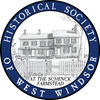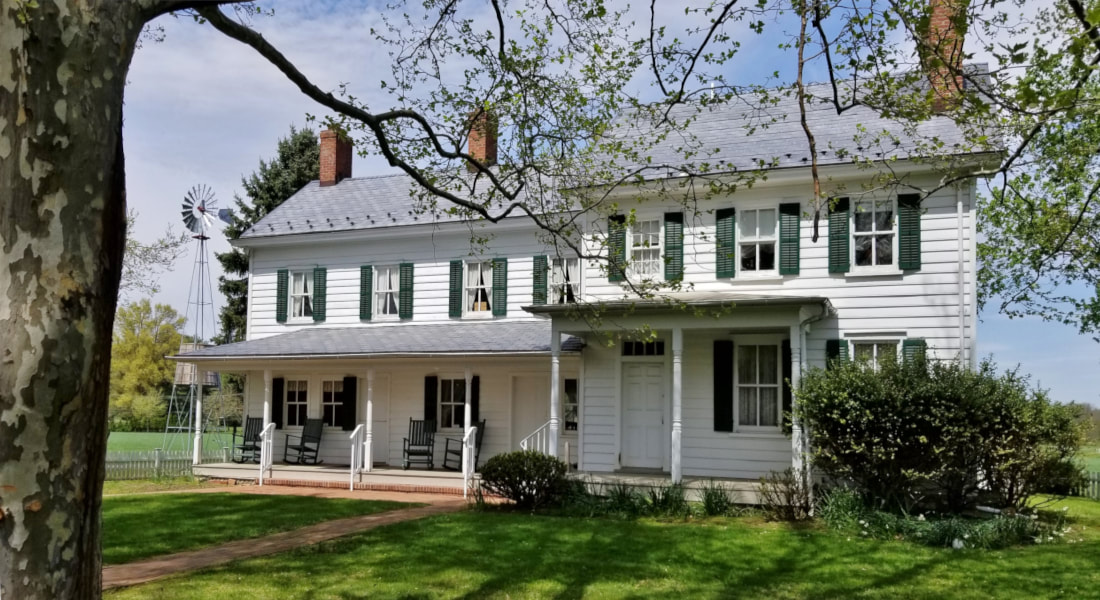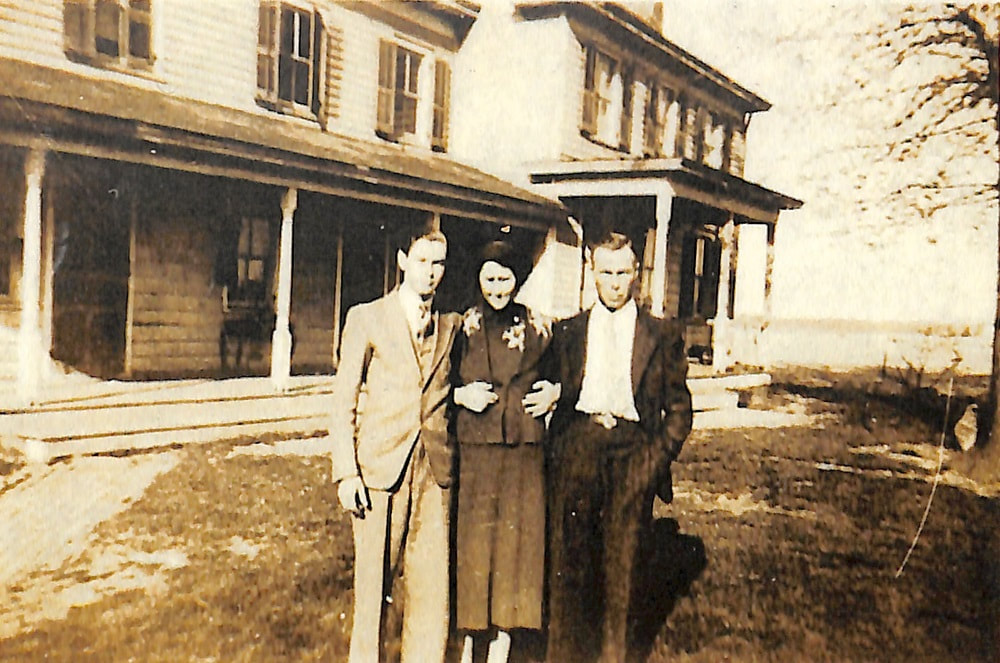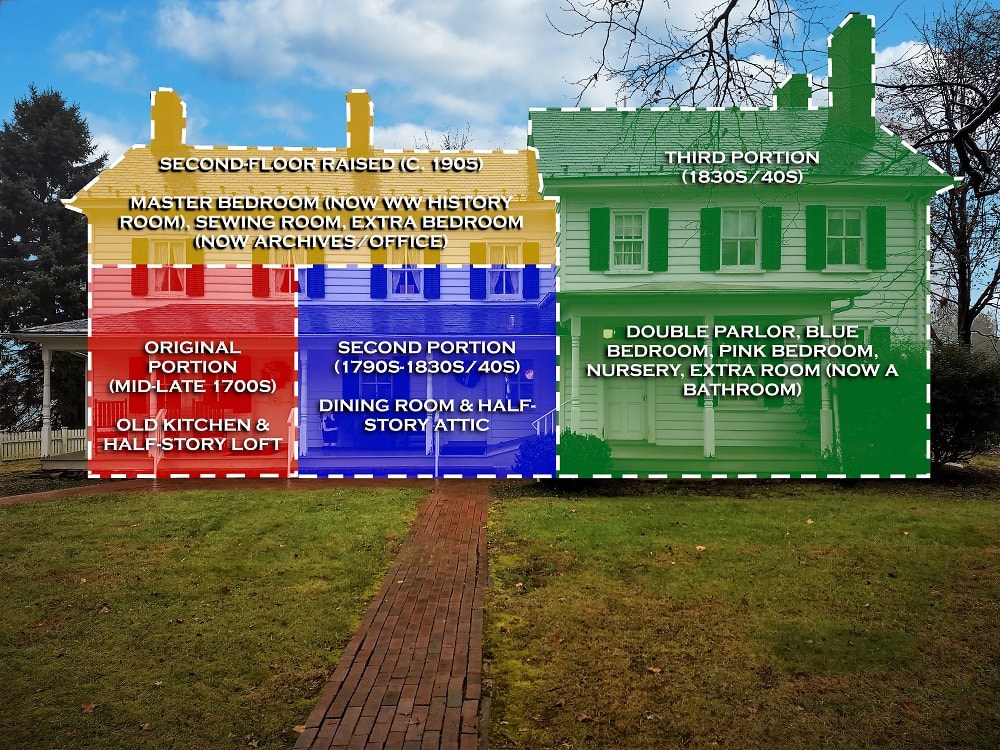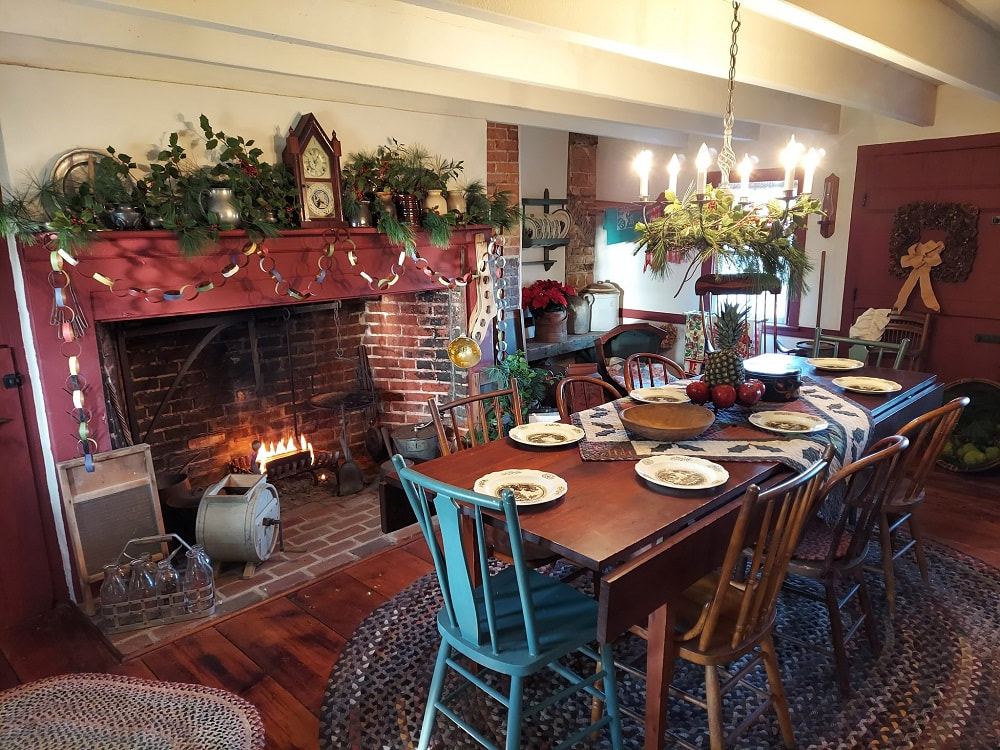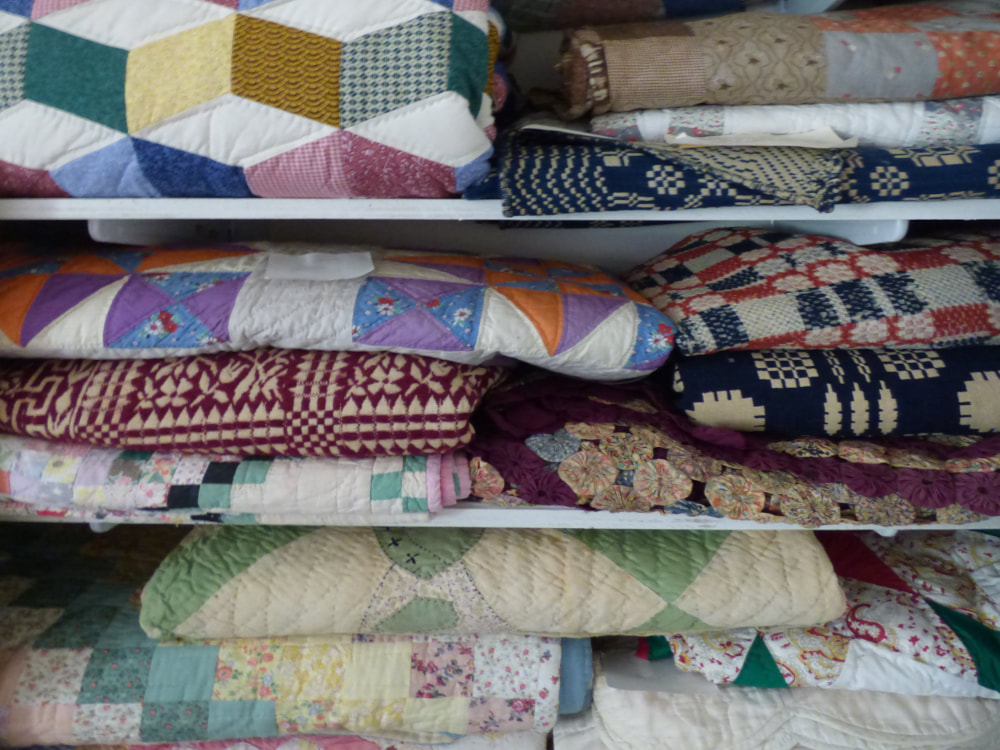Museum Tour: The Schenck Farmhouse
|
Standing in the middle of the historic Schenck Farmstead/West Windsor History Museum is the property's showcase building: the Schenck Farmhouse. Its exact date of construction is unknown, but architectural and deed analyses indicate it was built in the mid-late 1700s.
The farmhouse was presumably built by the Voorhees family - the farmstead's original owners, who likely farmed this land as early as the 1730s or 1740s. When it was built, the house originally consisted of just the old kitchen (the leftmost two windows and door on the first floor in the picture above) as well as a sleeping loft above. Visitors to the museum can visit the old kitchen and see hand-hewn beams, wide-planked flooring, an eighteenth-century fireplace crane in a large hearth, and brick construction on the western wall - a rare find in historical West Windsor buildings. |
|
Two additions were added that expanded the house eastward. In chronological order they are:
|
|
Below the old kitchen is a crawlspace, but the two additions have taller basements below. Many of the beams in the house still have bark on them and visitors will be delighted to see evidence of the house's evolution over time - such as windows only visible from the outside, doors leading to nowhere, and varied floor heights.
The family that lived here the longest was the Schenck family, who rented the house starting in 1888 and purchased it in 1899. Three generations of Schencks lived here until they sold the property to Max Zaitz in 1970. The house is currently configured to replicate how the Schenck family organized each room of the house. However, most of the furniture and artifacts actually come from outside the farmstead. Yet, the vast majority does originate from historical West Windsor properties. In this way, the farmhouse is an agglomeration of West Windsor history in its totality, and truly representative of our community's rich history. |
|
The farmstead was originally dilapidated when it was donated by Max Zaitz to the Historical Society in the early 1990s. However, over the years, numerous restorations to this structure and the buildings surrounding it have transformed it into a permanent memorial to West Windsor's heritage.
To tour the house and immerse yourself in centuries of local heritage, please contact us or visit us during our community events! |
